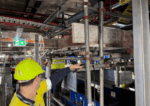2026: It’s Now or Never
From December issue, NZ Manufacturer – The Year in Review Ian Walsh, Partner, Argon & Co NZ We have finally seen the “green shoots” and those businesses still going can finally tick the survive (till) 2025 box. Confidence is on the up and activity is starting to move, what a ride! But what have we learned? Here are a few reflections from me. Traditional approaches to getting through the hard times are no longer enough. Many businesses tightened their belts, let people go, stopped all discretionary spending, travel etc. and didn’t make it. Waiting for things to get better is not a strategy. This is just giving your competitors, especially those overseas, a free pass. We can no longer rely on distance and separation for protection. NZ is easy to access and service from anywhere, if you think you are safe you may be deluding yourself. It is all about productivity. We must face into this reality, we can’t work harder or longer we already top this league, we must work differently and recognise the rest of the world is and has adapted, and so must we. There’s no avoiding it or waiting for government intervention. We have some core industries and capabilities which are world leading. Our dairy and tech sectors are world-leading, with aspirational companies. Let’s not be complacent; let’s push on and assert and grow these advantages. We have a window of opportunity. Carpe Diem. Now is the time, before the next global uncertainty. It is now or maybe never. Identify your strategic competitive advantage and actualise it? Need help? Seek it. We are brave and innovative, the pioneering spirit lives strong, we can do this. There are enough tall poppy killers out there, lets celebrate the go getters, the achievers, the adopters and the triers and […]










